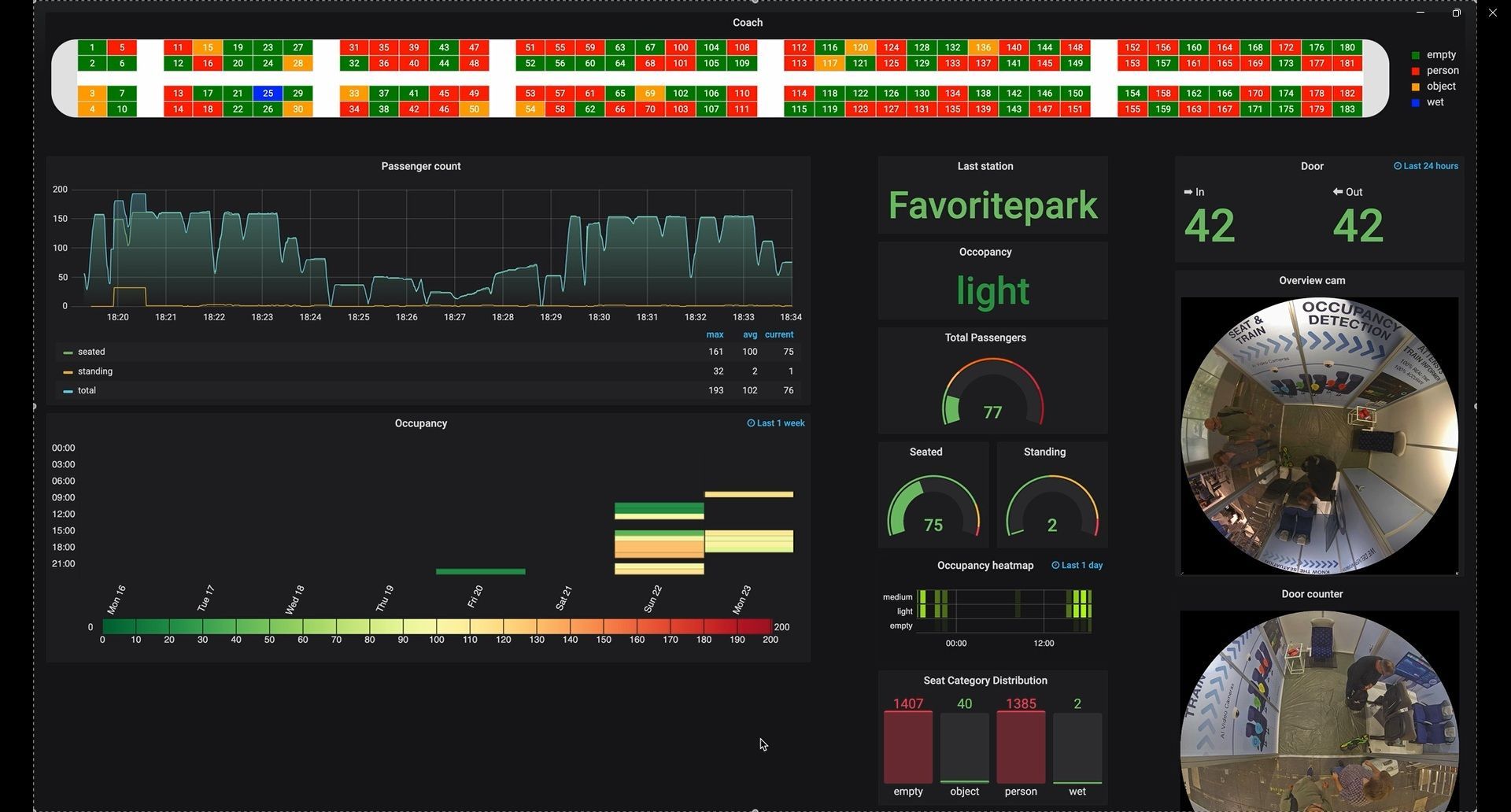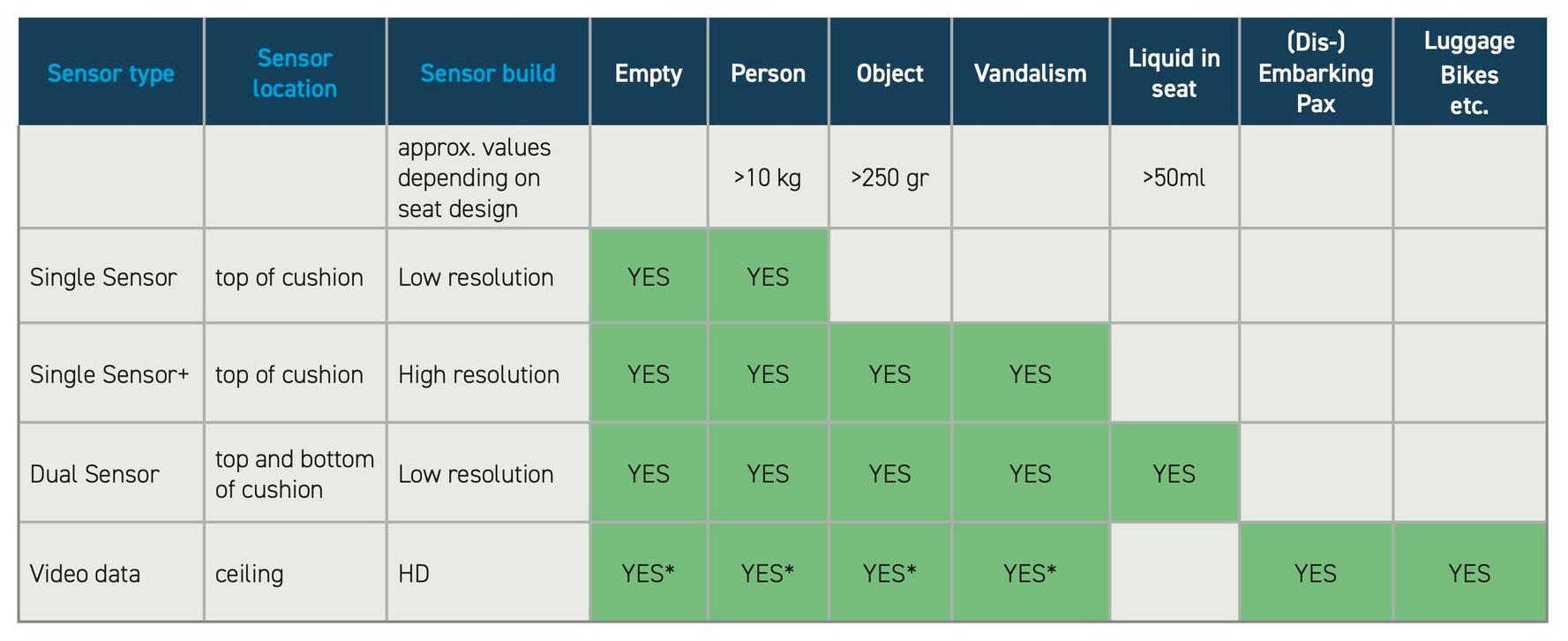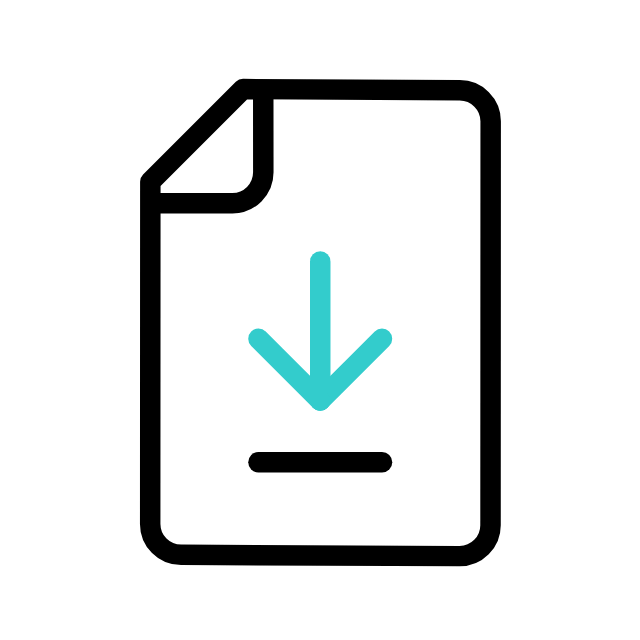
Attensys Seat Informer: Revolutionizing Real-Time Seat Occupancy in Public Transport
A Breakthrough in Smart Public Transport
Public transport in the 2020s is awash with technology – from mobile ticketing to live arrival updates – yet one basic question has long stumped both passengers and operators: Which seats are free right now? Despite a proliferation of “smart” transit solutions, there has been no truly comprehensive, real-time platform informing both passengers and transit operators about seat availability. It’s a paradox of modern mobility – we can track a vehicle’s location to the second, but inside that vehicle the seat occupancy remains largely a mystery.
The award-winning Attensys Seat Informer is changing that, bringing 21st century intelligence to every journey. Introduced as a breakthrough for modern rail travel, this system delivers up-to-the-second seat occupancy information, finally bridging the information gap between the people running the service and the people riding it. In an era when crowding and comfort are key concerns, Attensys’s innovation is being hailed as a game-changer for the passenger experience and operational efficiency alike.
From the moment a commuter steps onto a train, the Attensys Seat Informer works behind the scenes to make the journey smoother. A smart sensor embedded in each seat detects if the seat is occupied and by what – distinguishing a human passenger from a bag or other object and turning each seat into a data point.
These sensors even know if a seat is wet from a spill or has been tampered with. All that information is instantly relayed over a wireless network to the train’s onboard computer and the cloud. The result is a live map of seating across the vehicle:
operators can monitor exactly how many seats are free or taken, and passengers (via a smartphone app or platform displays) can quickly find an open spot to sit. It’s a level of real-time awareness that, until now, did not exist in public transport. “We create the information you need to enhance your business operations and passenger experience,” Attensys proclaims on its website – and for good reason. After years of incremental tech improvements in transit, the Attensys Seat Informer represents a leap forward, offering a single platform that serves both ends of the service spectrum in real time. In a century defined by data, Seat Informer brings the “Internet of Seats” to life, finally aligning on-board experience with the smart infrastructure around it.
From Startup to Industry Leader
Attensys’s journey began in 2017 as a Berlin-based startup with a bold idea: turn every seat into a source of data. At the time, the concept of instrumenting thousands of train seats with sensors and networking them together was unproven, but the need was obvious. Traditional passenger counting systems could estimate how full a train was, and reservation systems could tell if a seat should be occupied, but there was no way to know definitively which specific seats were actually free at any given moment. Attensys founders Jochen Treitel, Jakob Olrik and their team set out to tackle this elusive problem, developing what would become the Attensys Seat Informer system.
Their early efforts quickly gained attention. In 2017, young Bombardier engineers got wind of the first development and invited them to become part of their digital project goJoe, where it started to gain greater attention on conferences. In 2019, Attensys won Deutsche Bahn’s prestigious db Mindbox startup innovation challenge, earning recognition (and a €25,000 award) for the potential of their smart seat technology. The award gave Attensys a platform to pilot their system in real trains. By 2020, prototypes were being tested on a Deutsche Bahn commuter line in Stuttgart, proving that the sensors could reliably distinguish between adults, children, luggage, an empty or even a wet seat – and do it all in real time, under real-world conditions.
This early recognition put Attensys on the map as a promising player to watch. Armed with validation from Europe’s largest railway, the young company gained momentum, refining its technology and proving its reliability in pilots.

Behind the Technology: How the Attensys Seat Informer Works
The Attensys Seat Informer stands out because of the clever engineering, robust design and its ease of integration that underpin its simple promise. Retrofitting technology onto existing trains can be notoriously expensive and complicated, often requiring extensive wiring or modifications. Attensys avoided that pitfall by going wireless from the start.
Each Attensys Seat Informer sensor node communicates through a mesh network – a web of tiny radio modules that talk to each other and relay data seat-to-seat until it reaches a central gateway. This approach means installers don’t have to lay new data cables to every seat or connect each sensor physically to the train’s systems. Instead, the sensors are battery-powered and use wireless protocols to form an autonomous, self-organizing network. They simply “find” each other over the air. In practice, an entire carriage can be outfitted in a fraction of the time it would take to hard-wire even a single row of seats.
The wireless mesh network not only simplifies installation, it’s also fast and reliable in operation. Each seat sensor sends a trickle of data – just a few bytes to indicate its status – which the mesh aggregates and routes to a gateway device on the vehicle. That gateway ties into the train’s existing communication system (for example, a dedicated port on the onboard TCMS or Ethernet backbone). Attensys deliberately designed the data packets to be very small, ensuring they won’t bog down the network. This means real-time seat updates flow quickly to central servers with minimal bandwidth use. By using standard communications interfaces, the system can slot into a train’s IT architecture without exotic or proprietary requirements. In essence, if a train has power and a network connection, Attensys Seat Informer can be integrated. Costly or error-prone cabling is eliminated, and with it, a major barrier to adoption.

“Our sensor is designed to be more robust than anything else on the market, and it can be deployed in new trains as well as retrofitted into older ones. Deployment is easy because we chose a wireless solution – you just put in the sensors and the network finds the connections by itself,” explains Jakob Olrik, CTO and co-founder of Attensys, highlighting how the mesh network was purpose-built for hassle-free installation.
Robustness was another key engineering focus. Transit environments are tough: imagine thousands of passengers sitting, standing, and sometimes abusing the seats every day, plus vibrations, temperature swings, and the occasional spilled coffee. The state-of-the-art sensor in the Attensys Seat Informer is built to withstand this punishment. They use a capacitance sensor, combined with a thin mat under the seat cushion.
The hardware is ruggedized to all rail standards, meaning it can handle years of bumps and jolts. Battery life is optimized through low-power electronics and the efficient mesh protocol – field tests have shown batteries can last up to eight years before needing replacement. And because all the mesh nodes share a similar power profile, operators can service them on a predictable schedule (for instance, swapping out all seat sensor batteries during a periodic overhaul). In short, Attensys has taken cutting-edge IoT technology and adapted it to meet the strict reliability and safety standards of public transportation. The system is fully certified for onboard use, so rail operators can deploy it knowing it meets all necessary regulations for EMC, fire safety, and so on.
Perhaps most importantly, Attensys makes integration with existing software systems straightforward. The Attensys Seat Informer platform outputs its data in standard formats that can be fed into operator dashboards, maintenance management systems, or passenger-facing apps. There’s no need for an operator to rip out or replace their reservation or passenger information system – Attensys can feed into it. For example, if a train company already has a mobile app for journey planning, the real-time seat occupancy feed can be incorporated to show coach-by-coach seat availability. If the company uses a centralized control software for fleet management, the Attensys Seat Informer data can appear there too, giving dispatchers a live view of how full each train is. This plug-and-play philosophy – leveraging open APIs and common protocols – has made the difference in convincing traditional rail companies to adopt a new technology quickly. Attensys essentially speaks the language of existing systems, which lowers the barrier for its adoption across fleets new and old.
This standards-based approach means easier integration with various train IT systems and even third-party devices, ensuring the system isn’t a silo but part of a connected ecosystem.
What Can a “Smart Seat” Do?
At the core of the Attensys Seat Informer is an intelligent sensor pad that turns a passive seat into an active data source. It’s worth unpacking exactly what these smart seats detect and why it matters. Each sensor pad is multi-purpose, meaning it gathers several kinds of information from the seat in real time. Here’s what a typical Attensys instrumented seat can sense:
- Occupancy Status – Is the seat currently occupied or free? This seems basic, but it’s the foundational data point. By sensing through the in-built sensor pad, the system knows if someone is on the seat. The moment a passenger stands up, the seat’s status flips to “free” in the database, and vice versa.
- Passenger or Object – The system is the first on the market that can tell if the “object” on the seat is a person or actually an object, like a bag. By using the latest in sensor technology, Attensys distinguishes a living, breathing human from luggage or even a small child. This is crucial because a suitcase in a seat should be treated as an available seat (with the bag ideally moved), whereas a person is true occupancy. Early on, Attensys trained its system to recognize these differences, so the data isn’t just binary occupied/unoccupied – it has context.
- Size and Shape – Going further, the sensor can infer something about the occupant’s size. This helps differentiate an adult from a child, or a large bag from a small purse. While protecting privacy (no cameras in the seat, of course), the system simply uses the smart sensor and the software to categorize the occupant. This might allow, for instance, a future feature where families know if a child seat is free, or operators know how many kids versus adults are on board for statistical purposes.
- Spill and Wetness Detection – If a drink spills on the seat or someone sits down with a drenched raincoat, the sensor can detect the presence of liquid. A wet seat is clearly not usable for the next passenger and can cause hygiene issues. The Attensys sensor includes the capability to flag a seat as “wet” so cleaning crews or attendants can intervene quickly. In practice, if the Attensys Seat Informer reports a specific seat is wet, the train staff can mark it out of service (or notify the cleaning team at the next station) and even prevent it from being reserved by another passenger until it’s dry.
- Vandalism or Damage – The system can sense unusual patterns that might indicate a vandalized seat (for example, if the cushion is removed or destroyed, the sensor likely goes offline or registers abnormal readings). Also, if a sensor is tampered with, the system knows that seat has an issue. In one instance, Attensys has demonstrated that if someone slashes a seat or if the sensor pad’s integrity is compromised, an alert can be raised. This means the railway operator can react to vandalism in near real time, rather than discovering damage hours or days later. This goes beyond what cameras can detect since no view will be obstructed.
All these data points are transmitted in real time. The richness of information is what makes the Attensys Seat Informer a comprehensive platform. It’s not just counting bodies; it’s giving context to each seat’s status. For example, a train conductor could see that in Coach 3, there are 2 seats occupied by objects (so they might walk through and ask owners to move them), 1 seat is wet (need to block it for now), and the rest are taken by passengers. Passengers using an app might simply see that Coach 3 has 10 of 80 seats free, but internally the operator knows why the others are unavailable. This kind of granular detail simply wasn’t possible with earlier technologies.

Data Goldmine for Operators
From an operations standpoint, “the Attensys Seat Informer turns seating into a goldmine of data”, says Jochen C. Treitel, CEO and co-founder of Attensys. “Transit operators have never had this level of visibility into how seats – their fundamental revenue-generating assets – are used in real time and over time. With the Attensys Seat Informer implemented, operators can leverage the data in numerous ways to improve service and profitability.”
Here are some of the key benefits for operators:
- Fleet Planning & Capacity Optimization: Planners can analyze the seat occupancy patterns across thousands of journeys to determine if they are deploying the right number of train cars or buses on each route. For instance, if data shows a particular 7:30 AM train is always 95% full while the next one at 8:00 AM is only 50% full, they might add an extra carriage to the first and shorten the second. Over months and seasons, the Seat Informer’s statistics allow data driven decisions to fine-tune schedules and train lengths to match actual demand. This ensures the expensive rolling stock is used efficiently – putting capacity where passengers need it and not running empty seats where they don’t.
- Upselling & Revenue Management: With real-time knowledge of available seats, operators can pursue new revenue opportunities. One example is last-minute seat reservations or upgrades. If first class has many empty seats at departure, the system could trigger an offer to standard-class passengers to upgrade for a small fee, increasing revenue and improving customer satisfaction. Similarly, operators can confidently sell seat reservations or implement dynamic pricing for popular trains, knowing the occupancy data is accurate. The Attensys Seat Informer essentially enables an airline-style yield management approach for trains, where every seat’s status is tracked. No-shows can easily be fed back into the booking system for last-minute customers. Finally, the revenue forecast will see an up-to-now unseen accuracy based on real-time data.
- Service Quality & Fine-Tuning: The data helps operators refine the quality of their service in subtle ways. Are quiet cars actually less occupied (meaning maybe they could be opened to general seating if demand is high)? Are family areas being used by the intended groups? Do certain routes see many people traveling with luggage (implying more baggage racks needed)? With seat-level details, service design decisions can be based on evidence rather than anecdote. Even cleaning schedules can be adjusted: if certain trains show heavy use (high occupancy for many hours), they might require more frequent cleaning of seats and carpets, whereas lightly used trains might be serviced differently. It’s all about using data to allocate resources intelligently.
- Predictive Maintenance & Asset Management: Every seat in a fleet now essentially keeps a usage log, contributing to maintenance intelligence about the wear and tear. Life-cycle data from the Attensys Seat Informer tells maintenance teams which seats see the heaviest use and might wear out sooner, allowing more precise refurbishment schedules (no more blindly replacing all cushions on a set schedule – now you know exactly which ones need it). For example, a seat that has been occupied 10,000 times in two years might be due for a cushion replacement soon, whereas another seat used only half as much is still fine. Maintenance teams can also use this data to perform predictive maintenance on the seating. This targeted approach extends to detecting faults – if a sensor flags a spilled drink or vandalism (e.g., a cut seat cover), cleaners can be dispatched to address it promptly before the next passengers board. This not only keeps the environment pleasant and safe; it can prevent minor issues from becoming major damage. Trains can now be maintained smarter, reducing downtime and costs as resources are focused where needed rather than relying on routine checks or passenger complaints.
- Safety & Security Monitoring: An interesting side benefit is in security – because the system knows if a person or object is on a seat even when the train is not in normal operation. Imagine a train parked overnight in a depot: if Seat Informer detects a presence on board (perhaps someone trespassing or a forgotten passenger), it can alert security. Or if baggage is left on a seat after everyone disembarks, the system notes an object with no owner, which could be flagged as lost property or a security concern. This kind of awareness adds a layer of safety surveillance without any cameras, simply by reading the sensors.
- Analytics: The operator will be able to receive and interrogate multiple datasets to understand any trends in occupancy/seat usage, including links to other attributes such as by the window/close to toilet (to produce a more interesting dataset and answer other commercial questions). The Attensys Seat Informer also supports the development of reducing the amount of ticketless travel. The operator can use the occupancy status of the seat and align it with the booking status, identifying; a) Seats that are occupied and coupled to a booking and b) Seats that are occupied but without an associated booking. In the future this will be able to connect to new technologies including digital check-in.
- Real-Time Data Platform: All the seat sensors feed into a central Attensys hub on the vehicle, which then uplinks the data to the cloud or control center. The data streams are rich and continuous, providing a live map of seating across the fleet. Attensys provides operator dashboards that visualize occupancy levels car by car, train by train, and over time. Powerful analytics in the backend can crunch this data to reveal usage patterns and trends. On the passenger side, the system can interface with user-friendly apps and displays. A commuter can pull up a train layout on their phone that highlights which coaches have empty spots, or digital signs on a platform can direct boarding passengers to carriages with more space. Everything is designed to be real-time, intuitive, and actionable for both staff and riders.
- Passenger experience: Operator staff will have access to the live data feed to enable them to provide information to customers, directing them to quiet portions of the train/available seating. Operators will be able to receive and interrogate multiple datasets to enable enhanced planning of activities including catering stock levels / staffing levels / retail revenue and waste vs. loadings (and feed into machine learning accuracy)
For operators, these benefits translate to cost savings and improved service. Many operators call the seat the “main revenue maker” on a train – every occupied seat is income, every empty seat is a lost opportunity, and every out-of-service seat is a liability. The Attensys Seat Informer essentially shines a light on these revenue makers in real time. Dispatchers and managers gain a live control panel for load factors. Maintenance crews get a diagnostic tool that points exactly to which seat needs attention. Marketing and sales teams get data to craft better offerings (like quiet car promotions or off-peak discounts). And all of it is fed by a system that, once installed, operates automatically day in and day out. It’s no surprise that transit companies are embracing the technology: in a competitive and budget-constrained environment, squeezing more efficiency and revenue out of existing assets is extremely valuable.
The brilliance of the Attensys Seat Informer’s technology is how it leverages IoT (Internet of Things) principles for a very tangible outcome: a smoother, smarter journey. It’s a blend of hardware and software – tiny sensors and big data – working in concert to make life easier on the rails.
Enhancing the Passenger Experience
While operators use the data behind the scenes, passengers experience the Attensys Seat Informer’s benefits more directly. Anyone who has ever hunted for a seat on a crowded train knows the frustration: peering down the aisle for an empty spot, or rushing to board early in hopes of finding a place to sit. Attensys aims to eliminate that uncertainty and stress. For riders, the system manifests as clear, real-time information about where to find a seat.
In many deployments, this takes the form of a smartphone app or integration into journey-planning apps. A passenger can check before boarding which coaches have more free seats, or even see a layout of their train with occupied and free seats indicated. Instead of randomly choosing a car and hoping for the best, riders can strategically position themselves on the platform where the app shows space is available. Once on board, digital displays or overhead lights can guide them to specific seats that are open. This dramatically cuts down the time spent searching. Passengers settle in faster, and trains can depart promptly without people shuffling between cars last-minute. In fact, by reducing the chaos of boarding and seat-finding, Attensys indirectly helps keep trains on schedule – a benefit to everyone.
The improved experience doesn’t end at finding a seat. Because the system can identify seats with issues (like the wet or broken ones), operators can act pre-emptively to address them, meaning passengers are less likely to encounter unpleasant surprises such as a soaked cushion or a seat that won’t stay upright. If a seat is flagged as vandalized or non-functional, it can be marked out of service in the reservation system instantly, so no one is assigned to it. In essence, riders can trust that any seat shown as available is genuinely usable and clean. This reliability builds confidence and comfort.
There’s also a benefit in crowd management: informed passengers can make choices to avoid crowding. For example, if a passenger sees that the next train in 10 minutes has plenty of seats but the one in 2 minutes is nearly full, they might opt to wait, resulting in a more even distribution of passengers across services. During peak hours, this kind of transparency can mitigate crush loads. In off-peak times, showing lots of available seats might actually encourage more ridership (people may decide spur-of-the-moment to hop on since they know they’ll get a seat). Thus, what Attensys provides to passengers is more than just convenience – it’s a sense of control over their journey. The often-cited anxiety of public transport (“Will I have to stand for an hour? Will I find a seat together with my travel companion?”) can be eased with real data at their fingertips.

One especially novel feature being explored is using the seat sensors to help forgetful passengers. Because the system can detect objects left on seats, an integrated app could remind travelers if they’ve left something behind. For instance, if you stand up and walk off the train but your bag is still sitting on the seat, the sensor still sees an object and could trigger a push notification: “It looks like you left an item on Seat 12A.” This isn’t science fiction – the technology is essentially in place, and it’s just a matter of integrating it with user accounts or devices. Such a feature shows how the Attensys platform can directly enhance personal convenience and reduce lost-and-found incidents.
Overall, the passenger-side benefits of the Attensys Seat Informer boil down to a better travel experience: less stress, more comfort, and greater confidence in using the transit system. In surveys, riders consistently rate seating availability as a top factor in satisfaction. By tackling that issue head-on, Attensys is helping transit agencies attract and retain customers. In the long run, if more people can count on a pleasant ride (where “pleasant” starts with having a seat), public transport becomes a more attractive option versus driving. In that sense, Attensys’s invention isn’t just about seats – it’s contributing to broader goals like increasing ridership and promoting sustainable travel.
A Flexible Platform Built for the Future

Attensys designed the Seat Informer not just as a standalone product, but as a flexible platform that can evolve with emerging technologies. One of the system’s great strengths is its ability to integrate additional data streams and sensors, making it a central hub for various kinds of real-time information in a vehicle. This flexibility was on full display at InnoTrans 2024, the world’s largest transport technology trade fair, where Attensys wowed observers with a demonstration of the Attensys Seat Informer’s next-level integration capabilities.
In the demo at InnoTrans, Attensys showed how their seat occupancy data could be fused with AI-powered camera analytics. The setup involved overhead cameras in a train coach working in tandem with the seat sensors. The AI cameras from a leading manufacturer were trained to count passengers and detect objects (like luggage or bicycles in the aisles), while the Seat Informer tracked the seats. When combined, the system gave a remarkably comprehensive picture: not only which seats were occupied, but also how many people were standing and where, how much luggage was on board and its distribution, and even events like someone placing a stroller in the vestibule. The two data sources complemented each other – the cameras could catch what the seat sensors inherently can’t (e.g., standing passengers or crowding in vestibules), and the seat sensors provided ground-truth validation for the cameras’ counts and could detect things the cameras might miss (like a spill or a person obscured by others).
The result of this integration was a comprehensive real-time occupancy map richer than anything previously seen: an operator could see a live schematic of the train showing not just free and taken seats, but also overall passenger load and any anomalies. For example, if a group of standees started clustering by a door, the system would flag that section as crowded even if some seats elsewhere were free – a cue for conductors to maybe direct people to move along. At the same time, passengers using an app could get even more precise guidance: “plenty of seating in Coach 5” or “Coach 2 is standing-room only.” The InnoTrans crowd recognized this as a glimpse of the future, where multiple sensors and AI work together to make public transport hyper-aware and responsive.
What Attensys demonstrated goes beyond just seat occupancy – it hints at a platform that could incorporate numerous inputs: CCTV cameras, passenger counting sensors, temperature and air quality sensors, even data from other systems like reservation databases or delay information. The Attensys Seat Informer platform (the “Train Informer”) is being built to ingest and process varied data streams to give operators a one-stop overview of conditions on their vehicles. This makes it scalable and adaptable. If an operator later wants to add, say, a sensor for how full the luggage racks are, Attensys can integrate that into the same system instead of needing a separate solution.
Crucially, Attensys has kept the system modular. Not every transit agency will start with AI cameras or advanced integrations – some just want the seat occupancy to begin with. The Attensys Seat Informer can function perfectly well on its own, and additional modules (physical or software) can be added later like building blocks. This ensures that early adopters aren’t stuck with a one-note system, and as technology evolves (or budgets allow), they can enhance it. It’s a strategy that future-proofs the platform. Given how quickly innovation is happening in fields like computer vision and IoT, having a flexible architecture means Attensys can plug in improvements continuously. In a way, the company is positioning the Attensys Seat Informer as the digital backbone of the smart train/bus of the future – today it’s seats, tomorrow it might be a whole ecosystem of smart components working in unison.
The successful InnoTrans 2024 showcase – where Attensys collaborated with AI camera partners to highlight this synergy – has already sparked conversations with transit operators about pilot projects that go beyond seating. A few forward-thinking metro systems, for instance, are interested in combining seat occupancy data with platform crowd sensors to manage boarding at busy stations. Others are eyeing long-distance trains where seat sensors plus cameras could help staff deliver better service (like knowing which berths are occupied in a sleeper train without knocking on doors). The possibilities are expansive. Attensys’s ability to demonstrate a working integration rather than just a concept has set it apart. It proved to the industry that their platform isn’t a dead-end proprietary system, but a living, extensible technologythat can keep pace with the broader digitalization of public transport.

Milestones and the Road Ahead

In just a few years, the Attensys Seat Informer has progressed from a startup prototype to an industry-renowned solution, with a trajectory defined by ambitious projects and accolades. Some of the major milestones along this journey underscore how rapidly the technology and its adoption have advanced:
- Development contract with Bombardier (UK): Following an invitation at InnoTrans 2016 Attensys developed a PoC and quickly won the hearts of Bombardier engineers, who had started a digitalization project and were looking for disruptive technologies to be added.
- Innovation Award: Winning the Deutsche Bahn Mindbox challenge in 2019 put Attensys on the map. This was more than an honor; it led to a pilot partnership with DB, validating the concept on actual trains and earning the young company invaluable mentorship and credibility in the rail sector.
- Industry Recognition: Along the journey, Attensys garnered industry accolades beyond the early Bombardier and DB Mindbox award. Its Seat Informer solution has been frequently cited in transit innovation forums and was a finalist in multiple rail technology. These honors reflect not just clever tech, but also real-world impact – something award panels value highly. Attensys’s name is increasingly synonymous with seat occupancy innovation, and it has become a sought-after partner in smart mobility initiatives.
- Getting into the market – First Fleet Contract: Attensys’s big break came with a contract to equip a brand-new train fleet in the United Kingdom in 2021. This was the first full fleet deployment of the Attensys Seat Informer anywhere. It meant moving from small trials to outfitting hundreds of seats on passenger trains that would run daily. The project involved close collaboration with the train manufacturer to install sensors during the build. This milestone proved the product was ready for prime time and could be delivered at scale.
- Innovation never stops – InnoTrans Demonstration: Presenting at InnoTrans 2024, Attensys solidified its reputation as an innovator. The high-profile demo of integrating seat data with AI cameras was a highlight of the trade fair’s technology showcases. It signaled to the market that Attensys is not resting on the laurels of seat sensors alone, but actively pushing the envelope of what their platform can do. The positive reception from industry experts and media at InnoTrans has opened doors for international expansion and new tech partnerships.
- Scaling Up – 36,000 Seats Project: Hot on the heels of the first success, Attensys is about to secure another landmark deal – a large retrofit and new-build program covering roughly 36,000 seats. This undertaking dwarfs the earlier projects and represents one of the largest IoT deployments in rail to date. It includes intercity trains where the Attensys Seat Informer will interface with reservation systems to show reserved vs. free seats, and commuter trains where the focus is on live seat maps for mobile apps. Achieving this scale has required ramping up production of sensors, streamlining installation practices, and training operator staff to use the deluge of data effectively. It’s a critical proving ground for Attensys: by the end of this project, smart seating will no longer be a novelty on a few test trains but an everyday feature for tens of thousands of passengers.
- Lighthouse Project: All eyes are now on the planned lighthouse project in 2026. Though details remain confidential, Attensys hints that it will be a showcase unlike any before – possibly an entire railway line or a national network equipped with the Attensys Seat Informer end-to-end. Industry speculation suggests it might involve a major European national rail operator aiming to set a benchmark for smart trains. This project is dubbed a “lighthouse” because it’s intended to shine a light for the whole industry, proving out the technology at a scale that others can follow. For Attensys, it will be the culmination of nearly a decade of work: if successful, it will demonstrate that smart seat occupancy tracking is not just a niche add-on, but an essential component of modern public transport infrastructure. The 2026 milestone could very well mark the point where such systems move from early adoption into the mainstream.
Beyond 2026, the road for Attensys and seat occupancy tech in general is full of possibility. We may see real-time seat info become as standard as onboard Wi-Fi or GPS tracking. Attensys will likely continue refining sensor technology – perhaps making the next generation even thinner, or self-charging, or capable of detecting more parameters (heart rate monitoring seat for medical emergencies? Who knows!). The company will also face competition, as other firms are sure to develop their own smart seating solutions seeing Attensys’s success. But being first to market with a proven, scalable platform gives Attensys a considerable lead.
In public transport circles, the conversation has unmistakably shifted. Discussions about upgrading trains or buses now include smart seating as part of the wish list. Passenger expectations are evolving too – a traveler who’s used to checking a train seat map on their phone might soon demand that feature everywhere. Attensys finds itself at the center of this shift, driving a transformation in how we think about an object as ordinary as a seat. No longer is a seat just a cushion for a journey; in Attensys’s vision, it’s a node in a vast information network, feeding into a smarter, smoother transport system.
Changing How We See
“The Seat”

In the grand story of 21st-century transport innovation, the Attensys Seat Informer is a compelling chapter about solving a simple problem with smart technology. It represents a marriage of high-tech innovation with common-sense utility. By focusing on the humble seat – the core of passenger travel – Attensys managed to unleash a wave of improvements for everyone involved.
It takes the mystery out of train seating by providing concrete, real-time answers to questions passengers have been asking for ages. For operators, it unlocks new dimensions of control, getting a powerful new lens through which to understand and optimize their service, from daily operations to long-term planning and maintenance. The ripple effects – from improved on-time performance to happier customers and more efficient fleets – are profound. As one rail executive noted, “Attensys has changed the way we look at the main revenue maker – the seat.” Instead of being static furniture, seats are now dynamic data points and service enablers.
In short, Attensys’s system turns seat occupancy data into actionable intelligence. It helps run trains more efficiently, makes money in new ways, keeps the ride comfortable, and even extends the life of the assets – a quadruple win that explains why operators are excited about this innovation.

The success of Attensys is also a testament to the power of startups to drive innovation in a traditionally conservative industry. In less than a decade, what started as a small team with a clever idea has catalyzed a broader movement toward real-time occupancy management in transit. It also highlights a broader point: some innovations don’t require reinventing vehicles or infrastructure, just rethinking the information available. In a world where data is king, the Attensys Seat Informer adds a crucial data stream to public transport that had been missing, and filled a gap in the smart transportation landscape with a solution that feels almost obvious in hindsight. With digital transformation sweeping through public transport, the timing was perfect for the Attensys Seat Informer to make its mark.
Its story is being closely watched. One can anticipate that real-time seat occupancy information will become increasingly standard. Future commuters may look back in surprise that there was ever a time you couldn’t check seat availability before boarding. Thanks to Attensys Seat Informer, the days of wandering car to car for a free seat are numbered. Instead, we are moving toward a transit experience where every passenger is informed, every seat is optimized, and no space goes underutilized. It’s a vision of efficiency and comfort combined – a fitting hallmark of transport in the digital age, brought to life by a small team with a big idea about where you sit.
As Attensys charges into the future, the company is also eyeing expansions beyond trains – coaches, ferries, all kinds of transportation could benefit from similar occupancy tracking. The roadmap ahead includes continuing R&D to make sensors cheaper and even more energy-efficient, scaling up production for global demand, and deepening software analytics that can predict crowding or recommend operational changes automatically. The milestones achieved thus far provide a strong foundation for these ambitions.




